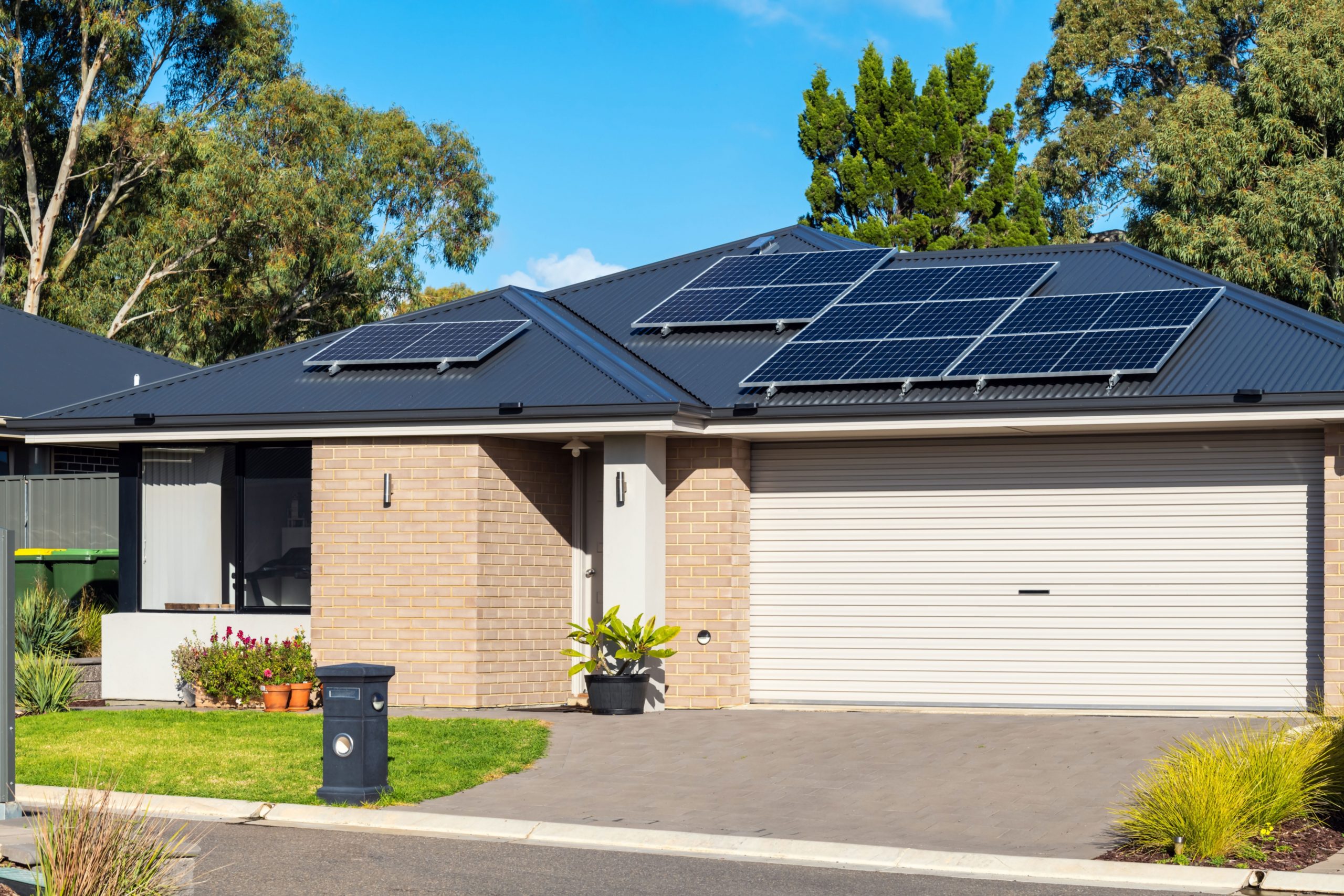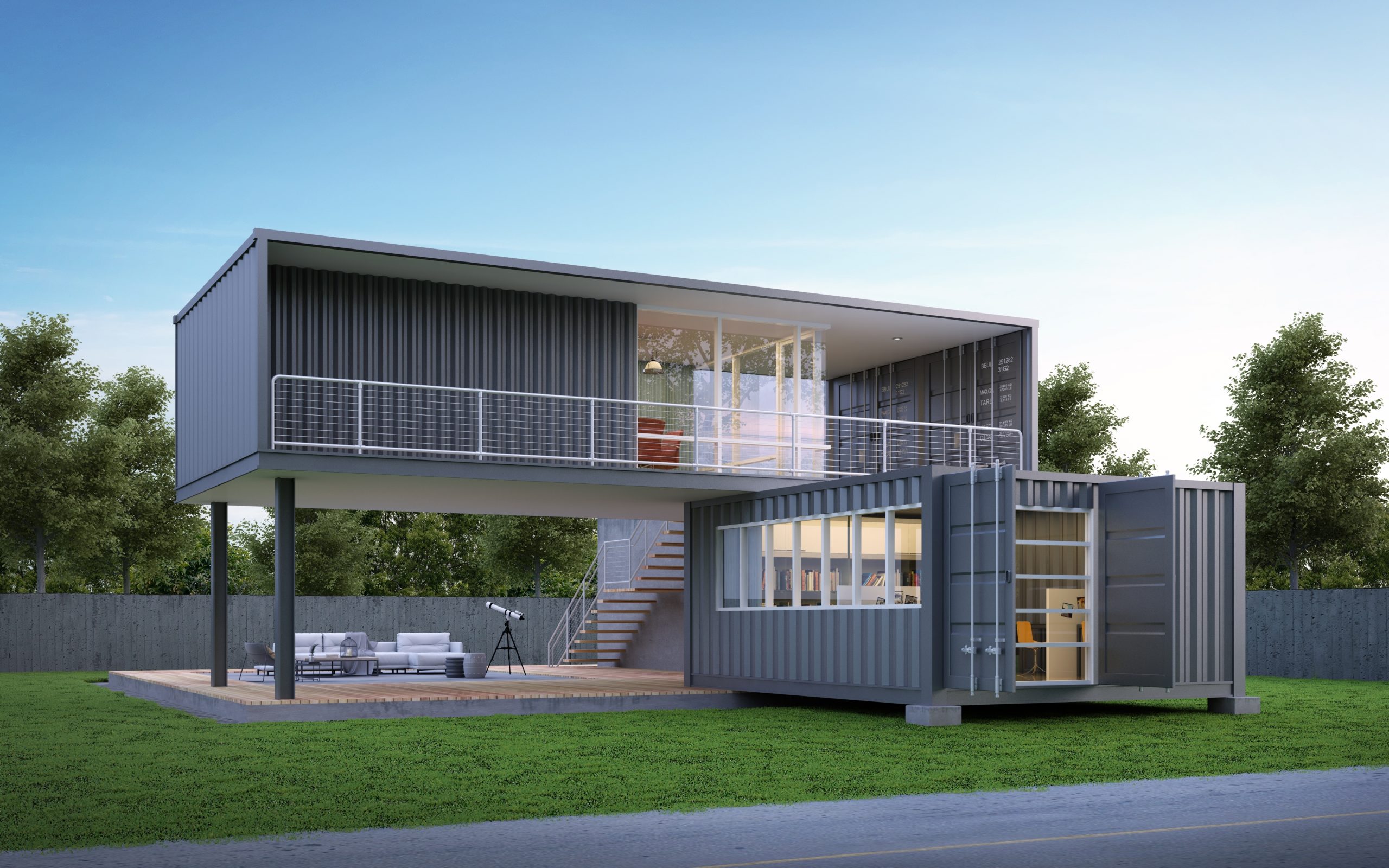Sustainable living has been a hot topic in recent years, and for good reason! As news of climate change and its impact becomes more prevalent, more and more people are trying to reduce their carbon footprint and live more eco-consciously. We have created an easy guide to help you understand what sustainable living is and how you can easily implement it in your life!
What is a Sustainable Home?
A sustainable home is designed to reduce environmental impact and operational costs. It uses low-impact, high-performance materials, and energy-efficient systems. Energy efficiency and quality materials are central to sustainability, reducing waste and improving longevity.

Tips & Features:
- Passive Solar Design:
Passive solar design involves strategic architectural planning to maximize the sun’s energy to heat and cool a building naturally. This design principle includes orienting the home so that the most sun-exposed areas are the ones that need warmth, such as living spaces. Large, south-facing windows can capture sunlight during the winter, while overhangs or shades block excessive heat during the summer. Materials like concrete or tile with thermal mass can absorb and slowly release heat, maintaining a more stable indoor temperature. This reduces the need for mechanical heating and cooling systems, leading to energy savings and a lower environmental impact. - High-Performance Windows:
High-performance windows are designed to significantly reduce energy loss, enhancing a home’s overall efficiency. These windows typically feature double or triple glazing, where multiple panes of glass are separated by air or gas-filled spaces to improve insulation. Low-emissivity (Low-E) coatings can further minimize heat transfer, reflecting infrared light while allowing visible light to pass through. Additionally, framing materials made from nonconductive materials, like vinyl, wood, or fiberglass, prevent thermal bridging, where heat escapes or enters through the window frame, improving the energy efficiency of the entire window unit. - Energy-Efficient Appliances:
Energy-efficient appliances are designed to perform their intended function using less energy than their conventional counterparts, often resulting in lower electricity bills and reduced environmental impact. Appliances with the ENERGY STAR® label meet strict energy efficiency guidelines set by regulatory agencies. These appliances, including refrigerators, washing machines, dishwashers, and more, often use advanced technologies like variable-speed motors and energy-saving modes to optimize performance while minimizing power consumption. - Drip Irrigation:
Drip irrigation is an efficient watering system that delivers water directly to the roots of plants, minimizing evaporation and runoff. This method uses a network of tubes, pipes, and emitters to apply water slowly and precisely to the plant’s base. Drip irrigation can be gravity-fed, using the natural force of gravity to move water through the system, or connected to a low-pressure pump. By delivering water directly to where it’s needed, drip irrigation reduces overall water usage, conserves electricity (especially in systems without pumps), and promotes healthier plant growth. - Eco-Paints:
Eco-paints are environmentally friendly paints that have low or zero volatile organic compounds (VOCs), which are harmful chemicals that can off-gas into the air, leading to indoor air pollution and health issues. These paints are made from natural or sustainably sourced materials, and they often have low odour during application and drying. By choosing eco-paints, you can create a healthier indoor environment, reduce the carbon footprint of your home improvement projects, and contribute to overall sustainability efforts. - Cool Roof:
A cool roof is designed to reflect more sunlight and absorb less heat than a standard roof. Cool roofs are typically made with reflective materials or coatings that have high solar reflectance and thermal emittance. By reducing the amount of heat transferred into the building, cool roofs can lower cooling costs, improve indoor comfort during hot weather, and extend the lifespan of the roof. Additionally, cool roofs can help mitigate the urban heat island effect, where densely built areas become significantly warmer than their rural surroundings. - Solar Panels:
Solar panels, or photovoltaic (PV) systems, convert sunlight into electricity, providing a renewable and sustainable source of energy for your home. By generating clean energy, solar panels reduce dependence on fossil fuels, lower greenhouse gas emissions, and can significantly decrease electricity bills. Depending on the size of the system and local energy costs, homeowners may see a return on investment over time through reduced utility bills, government incentives, and even selling excess energy back to the grid in some cases. - Smart Power Strips:
Smart power strips are designed to reduce energy waste by automatically cutting power to devices that are in standby mode or not in use. Unlike traditional power strips, smart power strips can detect when a device is not actively being used and shut off power to prevent “phantom” or “vampire” energy loss, which occurs when electronics consume electricity even when turned off. These power strips can be controlled manually, via a timer, or through remote sensors, making them a convenient and effective way to reduce overall energy consumption in a home. - Insulation Upgrades:
Upgrading insulation is one of the most effective ways to improve a home’s energy efficiency. Proper insulation in walls, floors, ceilings, and attics helps maintain a consistent indoor temperature, reducing the need for heating and cooling systems to work as hard. High-quality insulation materials, such as spray foam, fiberglass, or cellulose, prevent heat loss in the winter and keep cool air inside during the summer. Insulation upgrades can lead to significant energy savings, increased comfort, and a reduced carbon footprint by lowering overall energy consumption.

Types of Sustainable Homes:
- Shipping Container Homes:
Repurposing steel shipping containers into homes is a sustainable choice that reduces construction waste. These homes are durable, energy-efficient, and can withstand extreme weather conditions, making them ideal for various climates in Canada. With proper insulation and design, they offer a modern, eco-friendly living solution. - Zero-Carbon Homes:
Zero-carbon homes are designed to produce no net carbon emissions. They achieve this through high levels of insulation, airtight windows, and the use of renewable energy sources like solar panels. These homes are a key component in reducing Canada’s carbon footprint and promoting long-term environmental sustainability. - Tiny Homes:
Tiny homes are compact living spaces, usually under 400 square feet, that emphasize efficiency and minimalism. By reducing space, they inherently lower energy consumption and promote the use of sustainable materials. This makes them an excellent option for those looking to simplify their lives while minimizing their environmental impact. - Prefabricated Homes:
Prefabricated homes, or prefab homes, are built offsite in a controlled environment and then assembled on location. This method reduces construction waste and is typically more cost-effective than traditional building methods. Many prefab homes are now designed with sustainability in mind, including energy-efficient features and the use of eco-friendly materials. - Earthship Homes:
Earthship homes are designed for off-grid living, utilizing natural and recycled materials like earth-filled tires and bottles. These homes are self-sustaining, with systems for water collection, solar power, and temperature regulation through passive solar design. They are ideal for those seeking a lifestyle that is closely connected to the environment.

Simple Habits for Sustainable Living:
- Compost Kitchen Scraps:
Turn food waste into nutrient-rich compost instead of sending it to the landfill. Composting helps reduce methane emissions from landfills and provides valuable organic matter for your garden, enriching the soil and promoting plant growth. - Create an Energy-Efficient Garden:
Choose native or drought-tolerant plants that require less water and use mulch to conserve soil moisture. This reduces water usage and supports local biodiversity, creating a more sustainable garden that thrives with minimal maintenance. - Cold Water Laundry:
Washing clothes in cold water can significantly reduce your energy consumption, as heating water accounts for a large portion of energy use in laundry. This practice not only saves energy but also extends the life of your fabrics by being gentler on them. - Use Natural Cleaning Products:
Opt for eco-friendly cleaning products made from natural ingredients to reduce the presence of toxins in your home and minimize environmental pollution. Natural cleaning products are derived from ingredients like vinegar, baking soda, and essential oils, which are effective and safe alternatives to chemical-based cleaners. For example, vinegar can be used to clean glass and countertops, baking soda works well as a deodorizer and mild abrasive, and essential oils like lemon or lavender can add a pleasant scent while boosting cleaning power. Homemade cleaners can be easily mixed in spray bottles and used for various cleaning tasks, offering a healthier and more sustainable option for maintaining your home. - Houseplants:
Incorporating houseplants into your living space is a great way to enhance indoor air quality and bring a touch of nature into your home, especially if you don’t have a yard. Plants like spider plants, snake plants, and pothos are ideal for indoor environments as they are low-maintenance and can thrive in various light conditions. Houseplants help to filter pollutants from the air, increase humidity, and provide a calming aesthetic. They are also beneficial for mental health, offering a sense of tranquility and connection to nature. To care for houseplants, ensure they receive the appropriate amount of light, water them according to their needs, and use eco-friendly potting mixes to promote healthy growth. - Line-Dry Clothes:
Air-drying your clothes instead of using a dryer saves energy and reduces your carbon footprint. On rainy days, using dryer balls in the dryer can help reduce drying time and improve efficiency, further conserving energy.
Committing to sustainable living in Canada is about more than just reducing your environmental impact; it’s about making conscious choices that benefit both the planet and your quality of life. By adopting sustainable building practices and choosing eco-friendly homes, you are actively participating in the preservation of our natural resources and the reduction of harmful emissions. This commitment not only helps protect the environment but also ensures that you enjoy the long-term benefits of a healthier, more efficient living space. Sustainable living is a proactive choice that contributes to the well-being of the planet and fosters a legacy of environmental stewardship for future generations.
Information Referenced From:
https://blog.constellation.com/2020/01/07/ways-to-make-your-house-more-sustainable/
https://earth.org/sustainable-housing/
https://sustainabledesign.com/2602-2-2
https://thegoodhuman.com/container-home-vs-tiny-home/
https://natureloo.ca/our-blog/the-rise-of-off-grid-living-with-composting-toilets
https://theecohub.com/5-canadian-natural-cleaning-products-for-the-eco-conscious-home/


 Facebook
Facebook
 X
X
 Pinterest
Pinterest
 Copy Link
Copy Link

